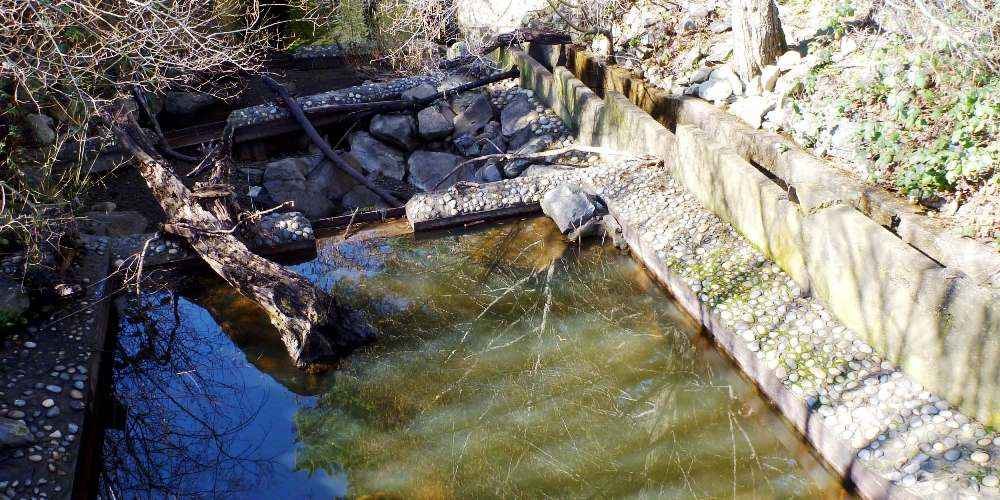In central California, the highest-priority fish passage obstacle is known as Roy’s Pools, this large obstruction includes a series of sheet metal and concrete check dams and fish ladder in the headwaters of San Geronimo Creek. The barrier currently limits upstream and downstream migration and creates poor habitat conditions for endangered coho salmon and threatened steelhead trout. But not for much longer.
A river restoration and salmon recover project is now underway which will also expand the riparian corridor to re-create floodplains, provide critical aquatic
habitat for young salmon, make valuable corridors for terrestrial wildlife movement, and greatly increase the amount of trees for nesting birds.
This project by the Salmon Protection And Watershed Network (SPAWN) will improve salmon habitat by adding large woody debris structures, backwaters, and side channels. Riparian habitat restoration will include expanding the riparian corridor, removing invasive plant species, and planting thousands of native plants and trees.
The project will replace the failing pedestrian bridge with a new prefabricated bridge that will link trails and provide fish viewing over a wider, more complex and stable creek channel.
In 1999, NOAA Fisheries developed designs for a series of pools composed of metal sheet piles, concrete and large boulders to help get fish over the former Roy’s Dam. This effort resulted in the Roy’s Pools structure we know today. Although the conversion of Roy’s Dam to Roy’s Pools helped in getting adult fish over the dam, the Pools became traps for young fish.
Stagnant water in the pools created breeding sites for mosquitoes and a home for invasive bullfrogs. In addition, the pools cut off access for young fish moving upstream and downstream of the site.
In a collaborative effort beginning in 2012 with the Lee Family, the previous owners of the former San Geronimo golf course, SPAWN secured grant funds to design a functional restoration of the creek channel through the Roy’s Pools reach, where a natural channel would replace the metal and concrete structures.
In 2012, SPAWN began the design process and hosted community meetings where neighbors gave input on the project and toured the site with the engineering team.
Although this is a creek channel restoration project at the former golf course property, this project is not a Trust for Public Land project and is not related to the visioning process that the Trust for Public Land and Trout Unlimited are currently conducting. This project was developed several years prior to the Trust for Public Land’s taking ownership of the property.
The construction phase of the restoration will begin in July 2020 and will be complete in October 2020. The revegetation and tree planting will begin following construction in late 2020 and will extend for 4-5 years following restoration.
Founded in 1990, Turtle Island Restoration Network’s California-based initiative, the Salmon Protection And Watershed Network (SPAWN), restores and protects California’s most important run of endangered coho salmon and the forests and watersheds they need to survive.
Photo courtesy of SPAWN.

